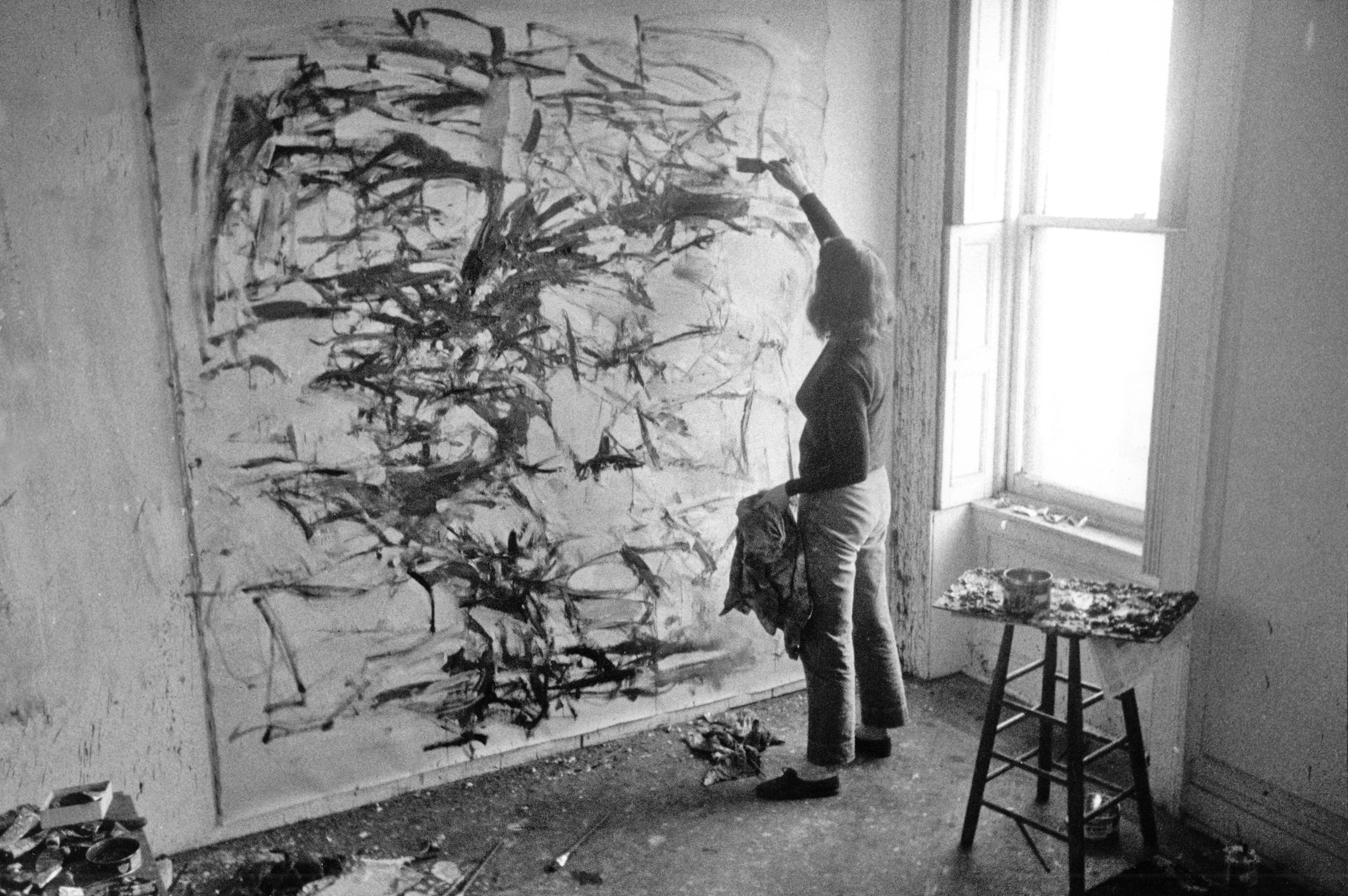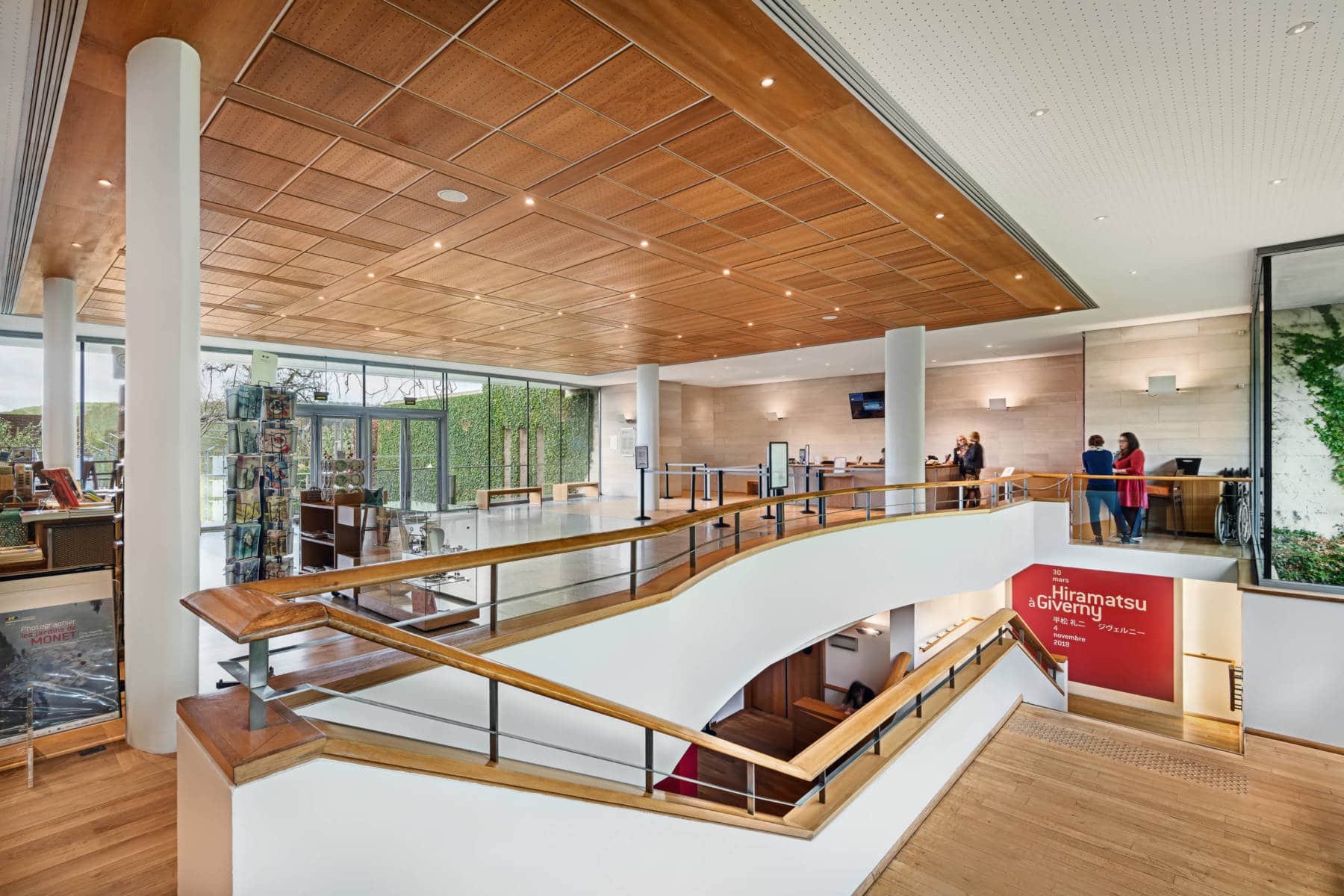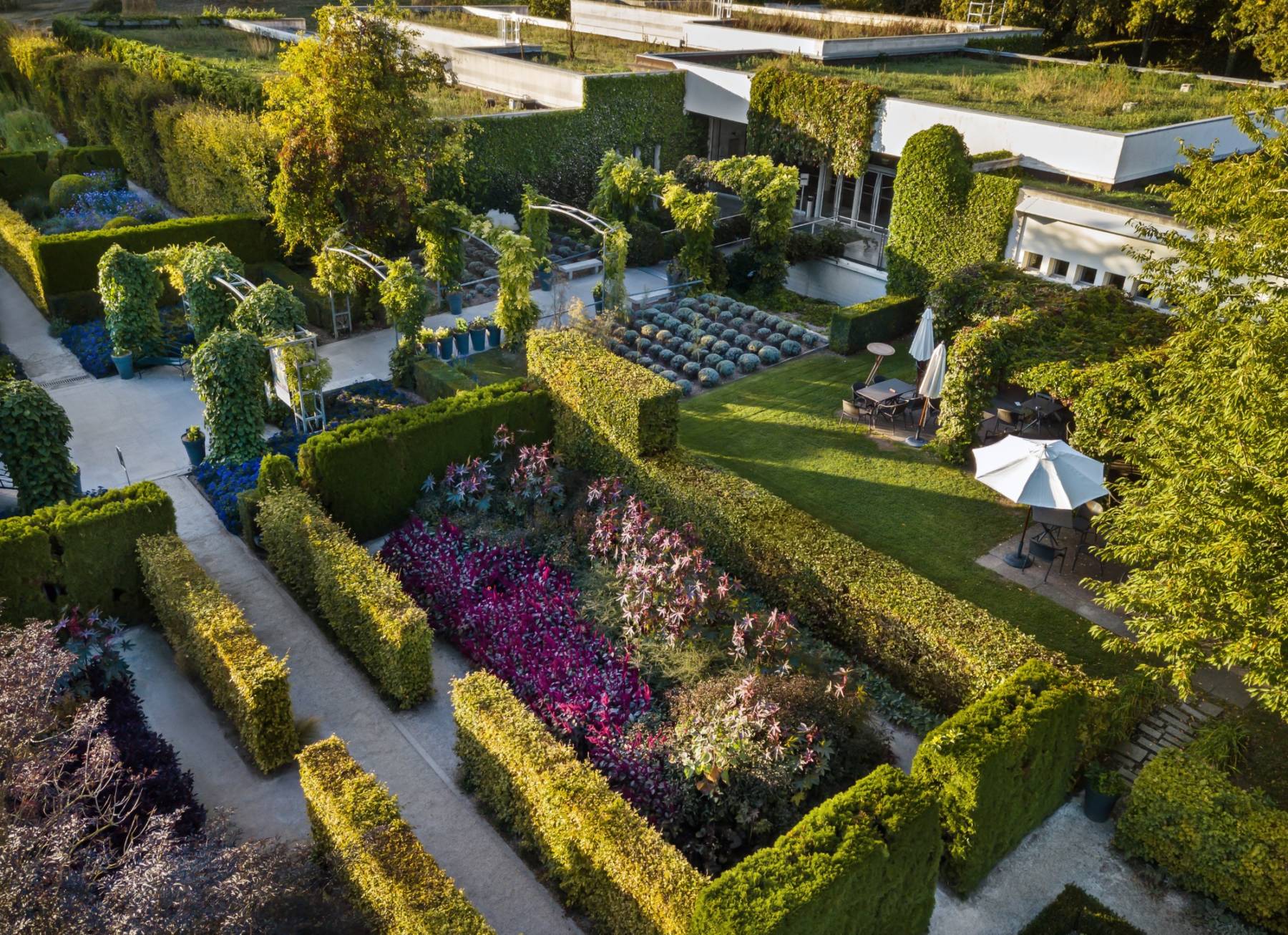Joan Mitchell
(Chicago, 1925 - Paris, 1992)

Joan Mitchell is one of the greatest abstract painters of the 20th century. Based in Vétheuil, she painted for years surrounded by landscapes dear to Claude Monet.
Abstract Expressionism or Abstract Impressionism?
Joan Mitchell was the daughter of a doctor and amateur artist, who regularly took her to museums, and of a poet, co-editor of the prestigious journal Poetry. From 1944 to 1947, she studied at the School of the Art Institute of Chicago.
Settled in New York in 1949, she frequented the places where the artistic avant-garde met. She became friends with Willem de Kooning and Franz Kline and was accepted into the “Artist’s Club”, which they founded in 1949. Only a few women – including Elaine de Kooning, Lee Krasner and Helen Frankenthaler – were admitted. Between 1950 and 1958, Mitchell worked and exhibited in New York alongside other abstract expressionist painters such as Willem De Kooning, Robert Motherwell and Jackson Pollock.
The critic Clement Greenberg pointed out at the time that it was impossible for New York artists to ignore the work of Claude Monet. A large panel of his Water Lilies had just entered the Museum of Modern Art. Mitchell always denied the influence of the master Impressionist on her painting. Despite this, she was often associated with “Abstract Impressionism”, an expression coined by critic Louis Finkelstein to evoke this encounter between Monet’s late work and American abstraction.
The studio in Vétheuil
In 1955, Joan Mitchell spent part of the summer in Paris, where she met several artists, including Sam Francis and Jean-Paul Riopelle, with whom she began a passionate relationship, which lasted until 1979. In 1959, Mitchell settled definitively in France. She lived in Paris with Riopelle, in a small apartment/studio, rue Frémicourt. In July 1967, Mitchell bought a house on the Seine, in Vétheuil. She lived their until the end of her life, close to a house which had been that of Claude Monet before he moved to nearby Giverny. In her Vétheuil studio, she painted series of polyptychs whose imposing format dominates the viewer.
As can be observed in her series Big Valley, Sunflowers or Fields, Joan Mitchell’s painting is immense, bright, dynamic and strongly references nature, which surrounded her studio in Vétheuil, with its wide views of the Seine.
Although Mitchell always refused to compare her paintings with Monet’s late work at Giverny, the two artists had several artistic concerns in common: the anchoring of their practice in an incessant observation of nature, their optical interest for colour and light, and the development of a monumental pictorial surface without a vanishing point, both frontal and transparent.
The museum
About us
See more

The museum
The garden
See more

